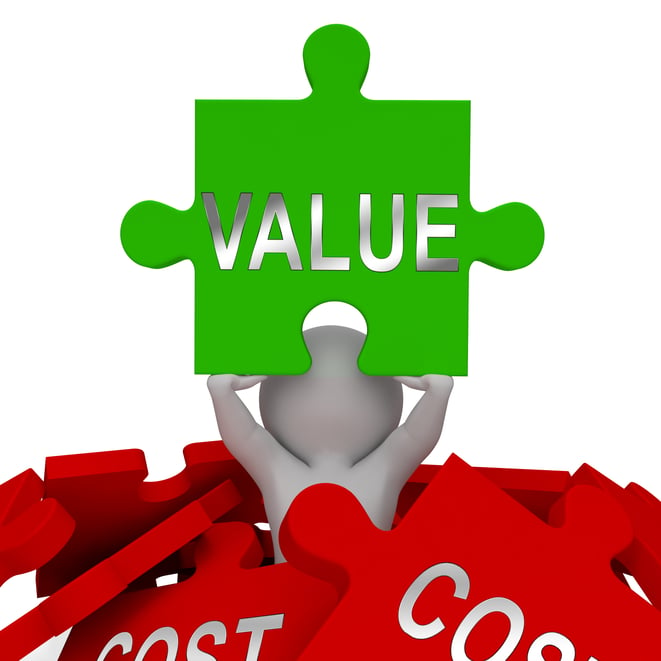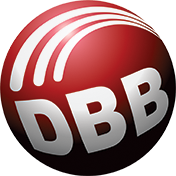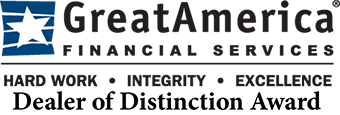
Let’s first address the factors which determine a cost per copied or printed page and in order to do this let’s assume an average monthly volume of 5,000 pages.
In a true cost per page, the equipment would be included. If the cost of the equipment is the industry average, $6,500, and is leased for five years this should be approximately $130 per month. At 5,000 pages per month, you will need $.026 per page just to cover the equipment cost.
Toner is a huge factor in determining cost per page. Our example above is a color device. This means it will require four toners at a time: Black, Cyan, Magenta and Yellow. Let’s assume the price for a black toner is $79 and yields approximately 16,500 pages based on 5% coverage. This would make just the black toner $.0048 per page.
The Cyan, Magenta and Yellow toners each cost $120 and yield approximately 5,500 pages based on 5% coverage. Each color toner costs $.022
A Full Color Page is calculated at 20% coverage of the page and based on these numbers, would equate to approximately $.07 just in toner costs.
Now, I am going to throw a wrench out, not to get us sidetracked, but it is something that definitely needs to be addressed. What happens when you want to have an extra set of toners on the shelf but you are only paying a cost per page price?
Toners on the shelf are not actually generating any cost per page revenue for your vendor. In the scenario above, this would equate to $439 in additional costs not factored into the cost per page. In essence, the cost per page for black just doubled to $.0096 per page and $.14 for a full color page just for toner. While there is the argument of having extra toner so you never run out and experience downtime, the fact is the number one cause of running out of toner is human error. The technology today is so advanced, if you sign up for our AutoTech program, you will never need those additional toners on the shelf nor need to worry about human error. You can read more about AutoTech,

Other consumable items would include the following:
Photoconductor or Development Units are often referred to as drums. In a color device, there will also be four of these units: Black, Cyan, Magenta and Yellow. They often range from $100 - $200 each.
Transfer Belts are also in the $100 - $200 range, as are Fusing Units or Fusers and Exhaust Filters.
If we itemize these by their standard page yields:
Black Drum yields 60,000 pages = $.0024 per page
Cyan Drum yields 48,000 pages = $.0026 per page
Magenta Drum yields 48,000 pages = $.0026 per page
Yellow Drum yields 48,000 pages = $.0026 per page
Transfer Belt yields 240,000 pages = $.0005 per page
Fusing Unit yields 240,000 pages = $.0005 per page
Exhaust Filter yields 400,000 pages = $.00032 per page. Based on our example of 5,000 pages per month, it is unlikely this component will need to be replaced in a typical 36 – 60 month term of ownership.
The last component which goes into determining the cost per page is labor. Most labor burden rates include more than just salaries and benefits. They should also include vehicle expenses, tools, and training. Trying to predetermine the number of service calls you will require each month, quarter and year is very difficult. The manufacturers typically provide assumptions in their service cost calculators, however, environments where there are a lot of different users and environments where there may be a lot of dirt and dust will generate significantly more service calls. The industry average of pages between service calls averages between 10,000 -20,000 pages.
How to read the proposals:
In a single device sale, you will probably not see a proposal structured with the equipment included in the cost per page. This is why it is so important to review the total cost of ownership and not just the cost per page.
- Know your average monthly volume of mono and color pages.
- Look carefully to see if there is a monthly base charge in addition to the cost per page listed. If there is a monthly base, be sure to investigate what is included. If it is 5,000 pages, is the base charge equal to 5,000 x the listed cost per page?
- Beware of “unlimited” pages included. If you know your volume is 5,000 per month and there are not going to be any significant changes in your business, divide the monthly “unlimited” base charge by 5,000 pages to get a true apples to apples comparison.
- Look for the Escalation Clause. It is not uncommon for there to be a 10 – 15% escalation to your contract each year. There is nothing wrong with contract escalations when you consider labor wage increases and that the equipment requires more parts replacement as it gets older, but you do need to take this into consideration when you are comparing competitive proposals.
When considering a large fleet proposal, the number one consideration should never just be the lowest price. There is a good deal more to managing your copier and printer fleet than just looking at it like a commodity. How critical are these devices to the operation of your business? What is the cost of downtime to your organization and to your customers?
A true Managed Print Services partner will be doing more than servicing your print fleet. They will be helping you improve business processes, optimize document workflows and the print environment, and continually analyzing to make recommendations and adjustments to your contract.
Finally, here are just a few things which may be more important to consider than low cost per page.
- How many and what is the tenure of the service technicians in your area?
- How readily available are parts and supplies?
- Can you see service reviews and actual response times to verify claims?
- Can you verify their Net Promoter Score? You can read more about NPS,

Pricing should be both competitive and fair.
Be wary of pricing which seems too good to be true.
Doing Better Business has been helping businesses large and small refine their processes and workflow since 1973. Contact us today to start a conversation about how we can help you achieve your business goals.

